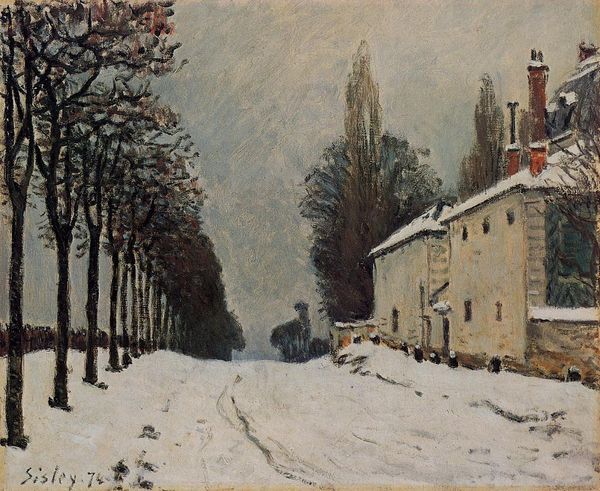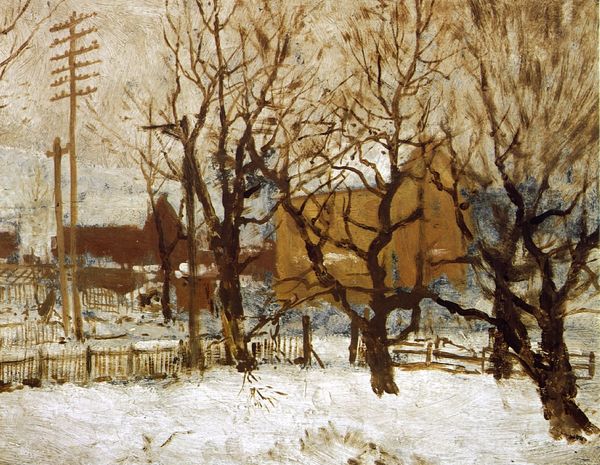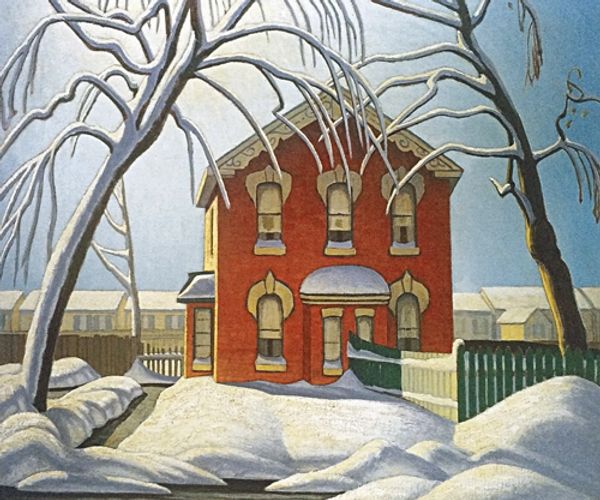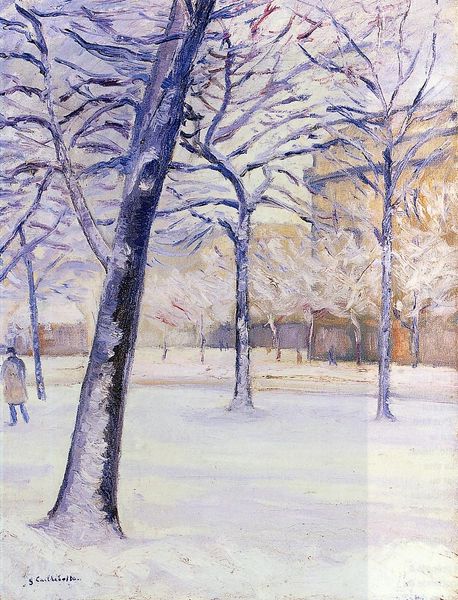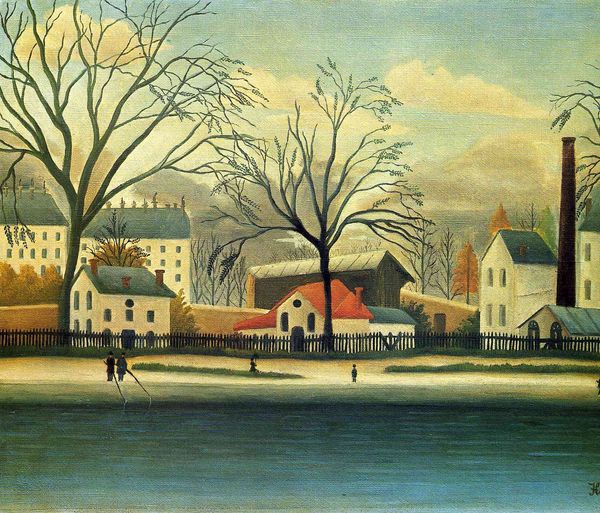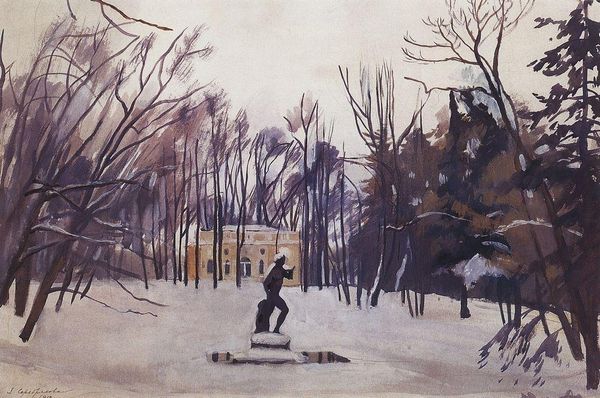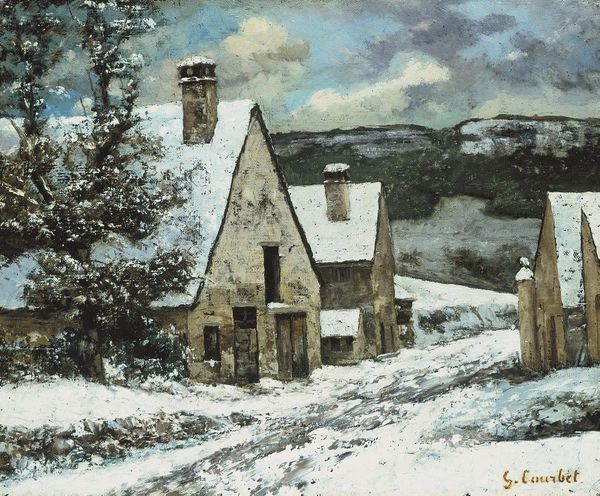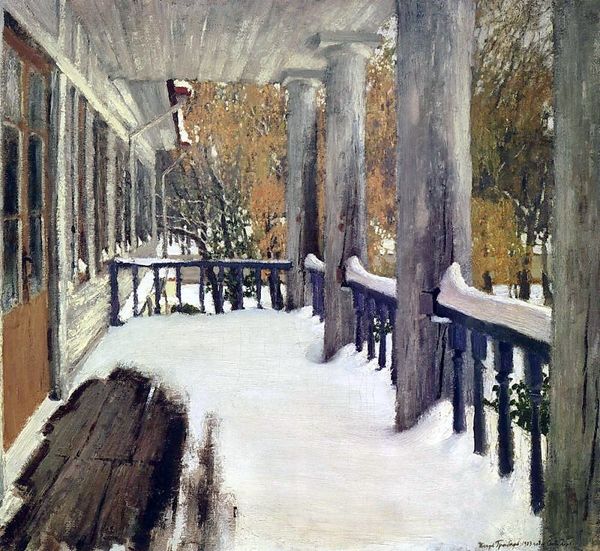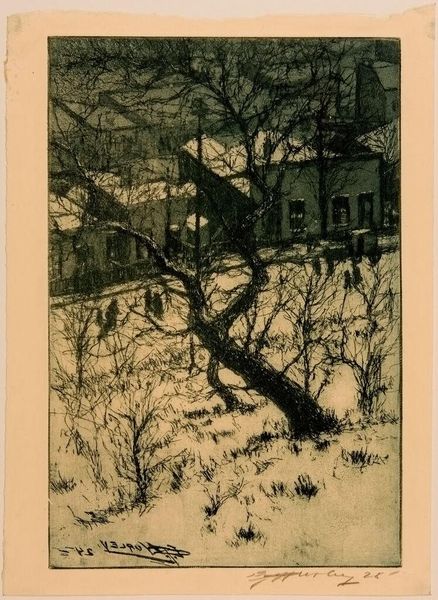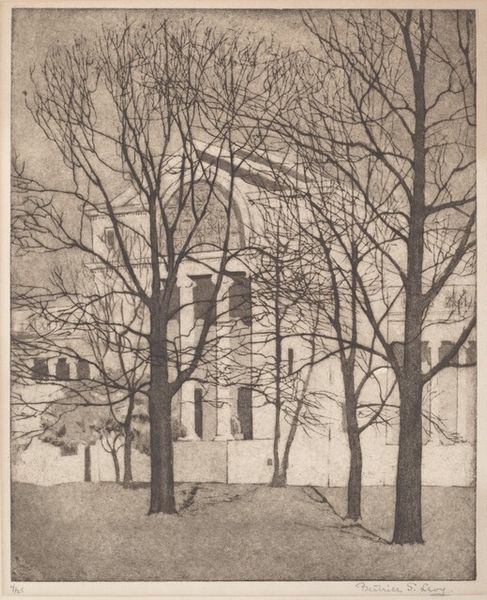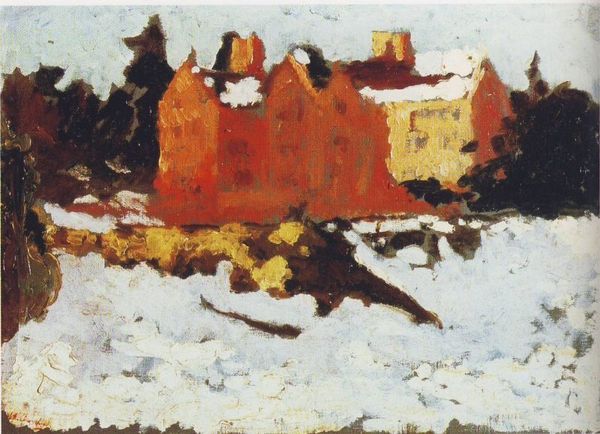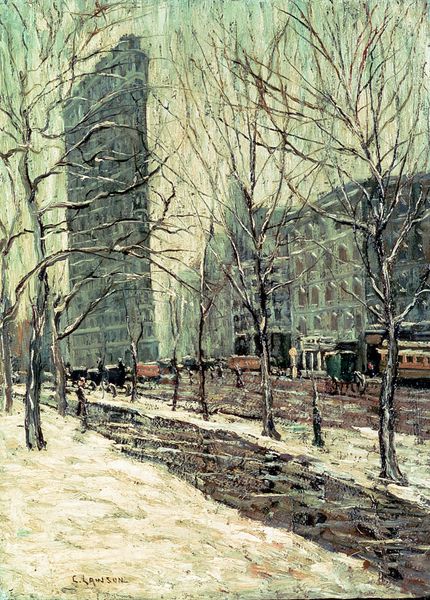
drawing, paper, graphite
#
drawing
#
art-nouveau
#
street-art
#
impressionist painting style
#
landscape
#
winter
#
impressionist landscape
#
possibly oil pastel
#
paper
#
oil painting
#
symbolism
#
graphite
#
russian-avant-garde
#
cityscape
#
watercolor
Copyright: Public domain US
Editor: This is “Winter in Tsarskoye Selo” by Mstislav Dobuzhinsky, created in 1904. It appears to be a drawing, maybe graphite or charcoal, on paper. I'm struck by the quiet, almost melancholic mood, like a stage set waiting for a drama to unfold. How do you interpret this work? Curator: It’s tempting to see it as merely picturesque, a nostalgic nod to Tsarist Russia. But look closer. Dobuzhinsky, as part of the Russian avant-garde, was deeply engaged with the socio-political landscape. The stark winter, the empty grounds, the somewhat oppressive architecture—doesn’t this evoke a sense of confinement, of societal rigidity? How does the lack of vibrant colour inform this reading? Editor: I see what you mean. It's less of a celebration and more of a…questioning? The bare trees could symbolize a kind of societal barrenness. But is that too much of a reach? Curator: Not at all. Consider the historical context. 1904 was a time of upheaval in Russia, leading to the 1905 Revolution. Dobuzhinsky, through his art, was subtly critiquing the existing power structures, perhaps reflecting the growing discontent and the yearning for change within Russian society. Think about who traditionally inhabited these spaces and who did not. Editor: So the beauty of the landscape is almost a deceptive surface? There’s a tension between the aesthetic appeal and the underlying social commentary? Curator: Precisely. It prompts us to consider the complexities of Russian identity and the simmering revolutionary fervor that would soon boil over. Can we truly separate aesthetics from the socio-political environment it stems from? Editor: I hadn't considered that. It’s fascinating how a seemingly simple winter scene can hold so much historical weight and social critique. Thanks! Curator: Absolutely, it reminds us to constantly question what we see and situate art within broader societal narratives. It gives "landscape" new resonance.
Comments
No comments
Be the first to comment and join the conversation on the ultimate creative platform.
